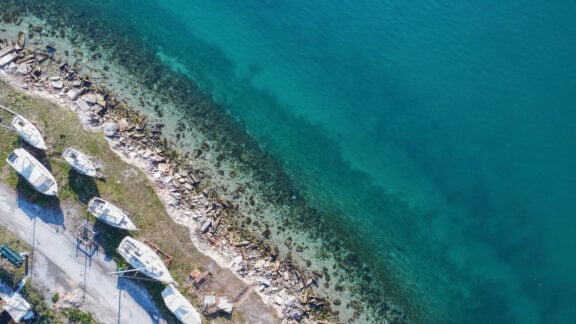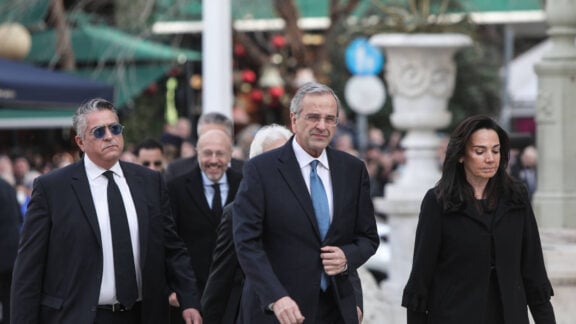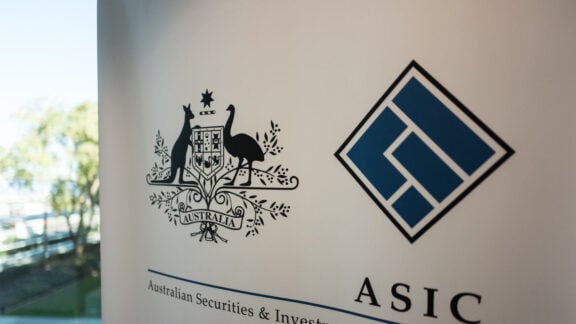Labor’s first budget in ten years is a response to an expected downturn in the global economy, and international headwinds like the war in Ukraine. Rising inflation is projected rise and with it energy prices with a projected 56 percent higher cost of electricity.
High commodities prices allowed Chalmers to reveal an improvement in the forecast Budget deficit of almost $42.7 billion over the forward estimates – much of the heavy lifting in this bottom-line improvement has come from positive adjustments in assumptions associated with government tax receipts.
Even with this lift in forecast revenues the government has maintained large assumptions about the return of commodity prices to more normal levels. For example, metallurgical coal is assumed to fall from US$271/tonne to US$130/tonne by the end of March 2023, while thermal coal is assumed to fall from US$438/tonne to US$60/tonne over the same time-period.
The report prepared by the Department of Industry, Science and Resources suggests prices for metallurgical coal will not fall below US$200/tonne between now and at least until the end of 2025, while spot prices for thermal coal are forecast to average around US$230/tonne and US$125/tonne during 2023 and 2024 respectively The implication of such generous assumptions is that revenues collected from company income tax are likely to be well above the forecast in the Budget.
Winners
Parents of young children
Parents and children will benefit, with the government allocating $4.7 billion over four years to deliver cheaper childcare with the goal of encouraging greater workforce participation.
Victorian rail loop
$2.2 billion has been committed to the Andrews government’s Suburban Rail Loop regardless the report released by the Australian Population Research Institute which says rail loop is not fit for purpose and a debt bomb.
Schoolkids
The government has promised a post-pandemic “student wellbeing boost” at a cost of $204 million. Schools can use the funding for various measures like mental health support, excursions and sporting and social activities. There’s also $271 million to improve ventilation and air quality, as well as larger refurbishments, at public schools.
Homebuyers
Labor has set a target of 1 million new homes to be delivered over the next five years from mid-2024, when capacity constraints are expected to ease. It includes 20,000 affordable homes, with an additional 30,000 affordable and social homes to be supplied via housing Australia future fund returns. Some 10,000 first home buyers in the regions will also be eligible to buy a home with a federal government guarantee of up to 15 per cent of the purchase price.
PBS patients
The maximum cost of general scripts under the pharmaceutical benefits scheme (PBS) fell for the first time in 75 years. From January 1, 2023, the PBS general co-payment will be lowered from $42.50 to $30 a script, saving 3.6 million Australians $190 million in out-of-pocket costs a year. In addition, $1.4 billion will be provided for new and amended listings on the PBS.
Electric car buyers
Battery, hydrogen fuel cell and plug-in hybrid cars to be exempted from taxes if their retail price is below the luxury car tax threshold. This will cost $410 million over four years.
Internet users $2.4 billion will be spent on the national broadband network to expand full fibre access to 1.5 million homes and businesses by 2025.
Voice to Parliament
Advocates $75.1 million to promote the referendum, including the Electoral Commission conducting an enrolment drive among Indigenous Australians.
Women’s safety
Nearly $170 million has been allocated for 500 frontline workers to support women and children facing family, domestic and sexual violence. Almost $40 million will be spent to increase the escaping violence payment, as well as $25 million over five years for a test of innovative responses to address the behaviour of domestic violence perpetrators.
Seniors
Almost $70 million has been allocated to increase the income threshold for the seniors’ health card from $61,284 to $90,000 for singles and from $98,054 to $144,000 (combined) for couples. The amount pensioners can earn before their pension is reduced will be increased from $7,800 to $11,800. And $74 million will be delivered to encourage pensioners to downsize homes, including by extending the assets test exemption for principal home sale proceeds from 12 months to 24 months.
Aged care residents $2.5 billion to mandate a minimum number of care minutes for nursing home residents and employing a registered nurse onsite 24/7 in homes. Average care minutes will reach 215 minutes per day per resident by October 2024.
The environment
The Climate Change Authority is returning with $42.6 million in funding. Rewiring the Nation will funnel $20 billion into upgrades to Australia’s electricity grid, with 10,000km of new transmission lines. $1.9 billion will be allocated to shifting regional industries towards decarbonisation, while $500 million will be committed to reducing transport emissions and $300 million on community batteries and solar banks.
Training
$852 million to provide 480,000 fee-free TAFE places.
Skilled migrants
Permanent migration program expanded to 195,000 places a year to fill dramatic worker shortages. The figure that came out of the last Skills Summit
Losers
Tax dodgers
The 2022 budget includes significantly increased funding for the ATO’s tax avoidance taskforce to crack down on tax avoidance by multinationals and individuals. To close tax loopholes, a multinational tax integrity package will raise about $1bn over four years, while a shadow economy and personal income tax will raise $3.7bn over four years.
Borrowers
Reserve Bank cash rate to peak at 3.35 per cent in the first half of next year.
Energy users
Power costs to rise by 20 per cent this year, and 30 per cent next year, as the war in Ukraine, ageing electricity infrastructure and investment uncertainty in renewable generation take a toll on households and businesses.
Consumers
Food crop losses and disruption to milk supplies because of flooding across the eastern states are expected to add 0.1 of a percentage point to inflation in the December and March quarters.
The arts
There were no new initiatives for the arts, with most announcements small and involving redirecting funds remaining from the Covid response for the sector or from other areas within the arts portfolio. Expenses under the arts and cultural heritage sub-function are estimated to decrease by 20.6 percent in real terms from 2022-23 to 2025-26.
High-speed rail
There’s $500 million for corridor acquisition and early works for the Sydney-to-Newcastle high-speed rail project but it is only a tiny fraction of what the project needs to go ahead. There’s also $18 million for the high-speed rail authority but, without an investment of many billions of dollars, high-speed rail looks to be going nowhere fast.
Jobseekers
The Australian Council of Social Service had hoped Labor would commit to an increase in jobseeker payment. Labor to ruled out any increase to the payment, which remains well below the poverty line.









